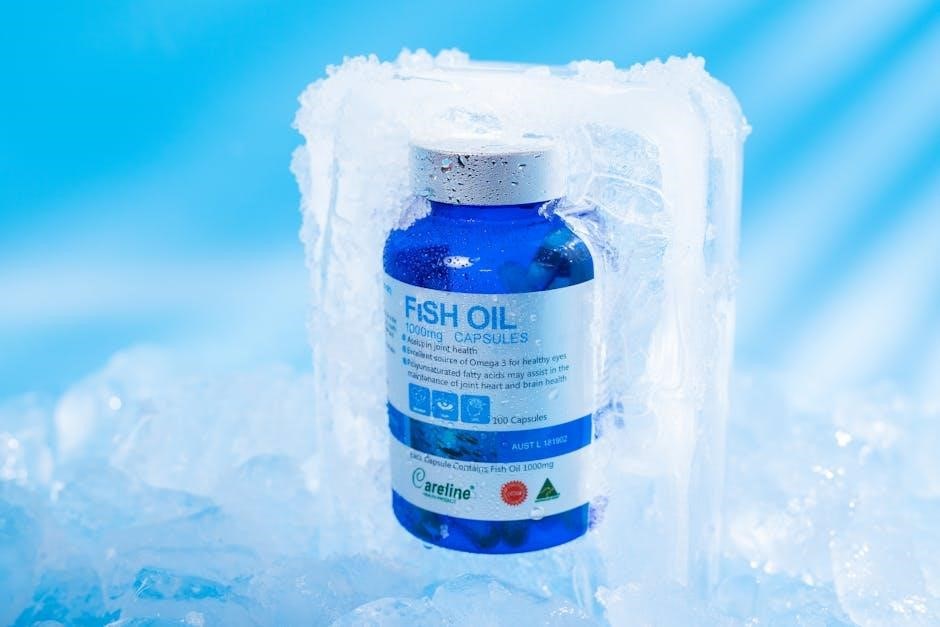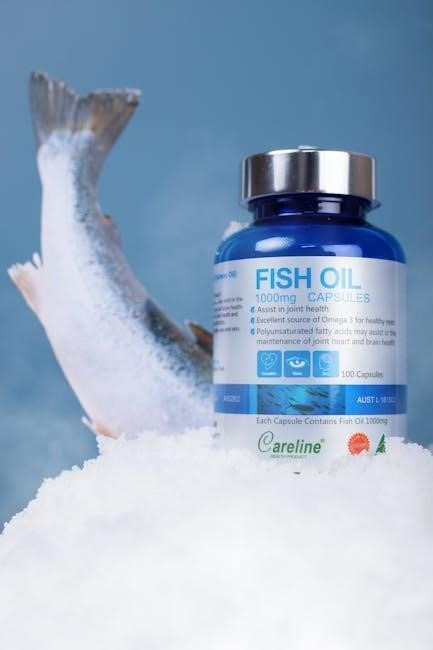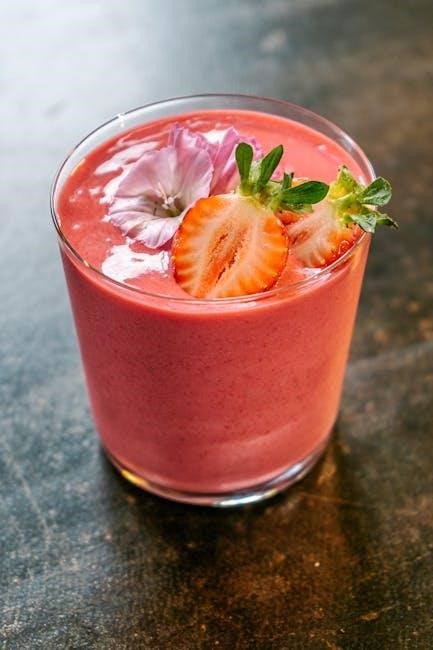Understanding the nutritional content of cold beers and cheeseburgers is essential for making informed dietary choices, as both items vary widely in calorie counts and health impacts.
1.1 Importance of Understanding Nutritional Content
Understanding the nutritional content of cold beers and cheeseburgers is crucial for maintaining a balanced diet and making informed choices. With varying calorie counts and macronutrient profiles, knowing the details helps consumers manage their intake of fats, carbs, and proteins. Additionally, awareness of additives and portion sizes can prevent overconsumption, which may lead to health issues. This knowledge empowers individuals to enjoy their favorite foods responsibly while aligning with their dietary goals and preferences.
1.2 Brief Overview of the Topic
Cold beers and cheeseburgers are popular choices, but their nutritional profiles vary significantly. Beers range from 100 to 300 calories per serving, while cheeseburgers can exceed 600 calories, depending on size and toppings. Both items contain carbs, fats, and proteins, with beers primarily offering carbs and cheeseburgers providing a mix of fats and proteins. Understanding their nutritional makeup helps consumers make informed decisions about portion sizes and overall dietary balance, especially for those monitoring calorie or macronutrient intake.
Calorie Content in Cold Beers
Cold beers typically range from 100 to 300 calories per serving, varying by type and brand. Understanding these values helps consumers make informed choices about their dietary intake.
2.1 Average Calorie Count in Different Beer Types
Light beers typically range from 90 to 120 calories, while regular beers usually fall between 140 to 160 calories. Craft and specialty beers can vary widely, often containing 200 to 300 calories or more due to higher alcohol content and richer ingredients. For example, a 12-ounce serving of a light lager might have around 100 calories, whereas a robust stout or IPA could exceed 250 calories. These values are influenced by factors such as malt content, hop levels, and serving size.
2.2 Factors Influencing Caloric Content in Beers

The caloric content of beers is primarily influenced by alcohol by volume (ABV), with higher ABV beers generally having more calories due to the energy density of alcohol. Additionally, malt content contributes to calorie count, as malts are a key source of fermentable sugars. Hop levels and yeast strains also play a role, though to a lesser extent. Serving size is another critical factor, as larger portions naturally increase calorie intake. These elements vary across beer types, leading to significant differences in nutritional profiles.

Nutritional Breakdown of Cheeseburgers
Cheeseburgers are rich in macronutrients, including proteins, fats, and carbohydrates, primarily from the beef patty, cheese, and bun; They also contain fiber and minerals like iron and calcium.
3.1 Macronutrient Profile (Carbs, Fats, Proteins)
A standard cheeseburger typically contains 40-50g of carbs, primarily from the bun and sauces. Fats range between 25-35g, with a significant portion coming from the beef patty and cheese. Proteins are abundant, averaging 25-35g, mostly from the beef and dairy. These values vary based on patty size, cheese type, and toppings, making cheeseburgers a calorie-dense meal with a balanced macronutrient profile that can be adjusted for dietary preferences.
3.2 Impact of Toppings and Ingredients on Nutrition
Toppings and ingredients significantly influence the nutritional value of cheeseburgers. Additions like bacon, cheese, and condiments can increase calorie, fat, and sodium content. For instance, bacon adds 10-15g of fat and cheese contributes 5-10g of saturated fat. Conversely, using fresh vegetables like lettuce and tomatoes adds vitamins and fiber without significantly increasing calories. Customizing toppings allows for healthier modifications, such as low-fat cheese or fewer condiments, making the meal more nutritionally balanced while maintaining flavor.

Comparative Analysis of Beer and Cheeseburger Calories
A standard cheeseburger typically ranges from 500 to 700 calories, while a 12 oz beer averages around 150 calories, making combining both a calorically dense choice.
4.1 Calorie Intake per Serving
A 12 oz beer typically ranges from 100 to 200 calories, depending on the type, while a standard cheeseburger can range from 300 to 600 calories per serving. These values vary based on ingredients and portion sizes, with factors like beer strength and burger toppings significantly impacting overall calorie intake. Understanding these serving sizes helps consumers make informed decisions about their dietary choices and health goals.
4.2 Cumulative Caloric Impact of Combining Both
Combining a cold beer and a cheeseburger can significantly increase calorie intake. A 12 oz beer (150 calories) paired with a standard cheeseburger (450 calories) totals around 600 calories. However, this can rise to over 1,200 calories with larger portions, multiple beers, or additional toppings. This cumulative intake represents a substantial portion of the recommended daily calorie consumption, emphasizing the need for mindful portion control and balanced dietary habits to maintain overall health and wellness.

Key Nutritional Facts to Consider
Cold beers and cheeseburgers often contain high levels of sodium and sugar, primarily from preservatives and condiments, which can have significant health implications when consumed regularly.
5.1 Sodium and Sugar Content
Sodium and sugar levels in cold beers and cheeseburgers can be significant due to preservatives, condiments, and ingredients like cheese and buns. Beers often contain sugars from malt and yeast, while cheeseburgers derive sugars from buns and sauces. Excessive consumption of these can lead to health issues such as high blood pressure and weight gain. Moderation is key, and opting for low-sodium or reduced-sugar alternatives can help mitigate these concerns.
5.2 Health Implications of Regular Consumption
Regular consumption of cold beers and cheeseburgers can lead to excessive calorie and fat intake, contributing to weight gain and obesity. High sodium levels may increase blood pressure and cardiovascular risks, while sugars from beers and buns can elevate diabetes concerns. The combination of alcohol and processed meats may also strain liver function and overall health. Moderation and balanced nutrition are crucial to mitigate these risks and maintain long-term well-being.
Factors Affecting Nutritional Value
Portion sizes, cooking methods, and additives significantly impact the nutritional value of cold beers and cheeseburgers, altering calorie, fat, and sodium content, and affecting health and taste.
6.1 Portion Sizes and Cooking Methods

Portion sizes and cooking methods greatly influence the nutritional value of cold beers and cheeseburgers. A standard cheeseburger can range from 300 to 600 calories, depending on patty size and toppings, while beers typically range from 100 to 300 calories per serving. Cooking techniques, such as grilling or frying, also affect fat content. For example, a grilled burger patty may contain less fat than a fried one. These factors collectively impact the overall calorie and macronutrient intake, making mindful portion control and cooking choices essential for healthier consumption.

6.2 Role of Additives and Preservatives
Additives and preservatives in cold beers and cheeseburgers can significantly impact their nutritional profiles. Beers often contain additives like hops, yeast, and stabilizers, which may affect calorie and carb content. Cheeseburgers frequently include preservatives in buns, sauces, and processed toppings, increasing sodium and sugar levels. These additives can enhance flavor and shelf life but may also contribute to higher intake of unhealthy substances, making it important to opt for products with fewer artificial ingredients to maintain better nutritional balance.
Healthier Alternatives and Modifications
Opt for low-carb cheeseburgers with lettuce wraps or choose lighter beer options to reduce calorie intake while enjoying your favorites in a more balanced way.
7.1 Low-Carb and Low-Fat Options
For a healthier twist, opt for low-carb cheeseburgers by swapping buns with lettuce wraps, reducing carb intake significantly. Choose leaner beef or plant-based patties to lower fat content. Pair with light beers, which offer fewer calories and carbs, making the meal more balanced. These modifications not only cut calorie intake but also retain the flavorful experience, allowing for guilt-free indulgence while maintaining nutritional awareness.
- Lettuce-wrapped patties reduce carb intake.
- Lean beef or plant-based options lower fat content.
- Light beers provide fewer calories and carbs.
7.2 Impact of Using Fresh Ingredients
Using fresh ingredients in cheeseburgers and beers enhances nutritional quality and flavor. Fresh produce reduces sodium and sugar content, while lean meats and whole foods lower saturated fats. Craft beers often use natural ingredients, minimizing additives. Fresh ingredients promote better digestion and overall health, making meals more balanced and satisfying without compromising taste.
- Fresh produce lowers sodium and sugar.
- Lean meats reduce saturated fats.
- Craft beers use natural, healthier ingredients.

- Know the basics to make informed decisions.
- Balance enjoyment with nutritional awareness.
8.1 Summary of Key Nutritional Insights
Cold beers and cheeseburgers vary significantly in nutritional content. Beers range from 100 to 300 calories, while cheeseburgers can be 300 to 600 calories, depending on ingredients and toppings. Sodium and sugar levels are notable, especially in processed components. Mindful consumption is key, as regular indulgence can lead to health issues. Opting for healthier alternatives, like low-carb or fresh-ingredient options, can help balance enjoyment with nutrition.

8.2 Practical Tips for Making Informed Choices
To make healthier choices, opt for smaller beer sizes and cheeseburgers with whole-grain buns. Customize orders by reducing toppings or choosing low-fat cheese. Pair meals with side salads instead of fries. Avoid overconsumption by setting portion limits and balancing indulgences with nutrient-dense meals. Stay informed by reviewing nutritional guides or restaurant menus to make mindful decisions.